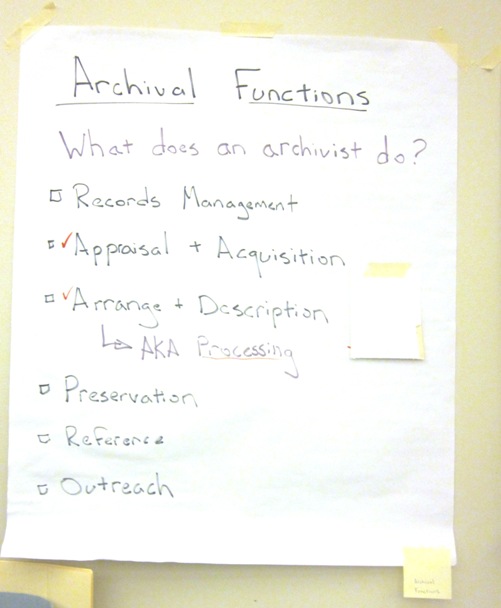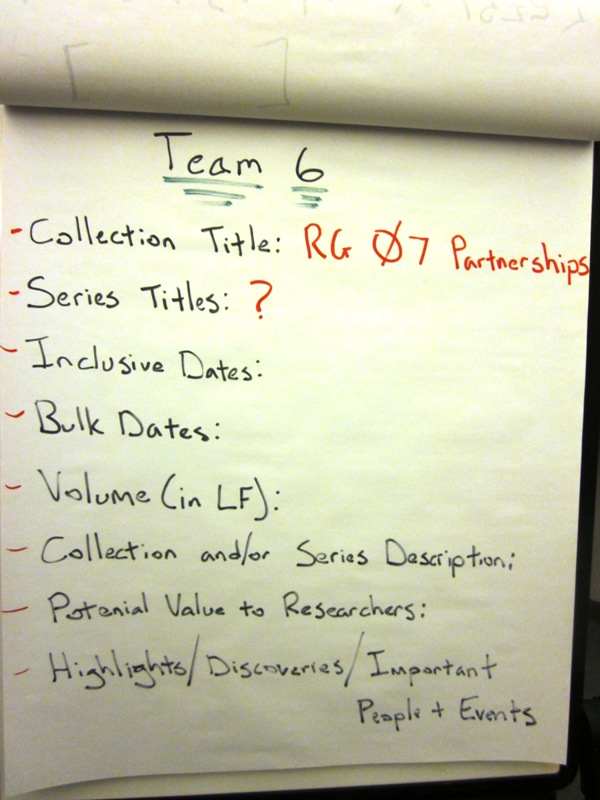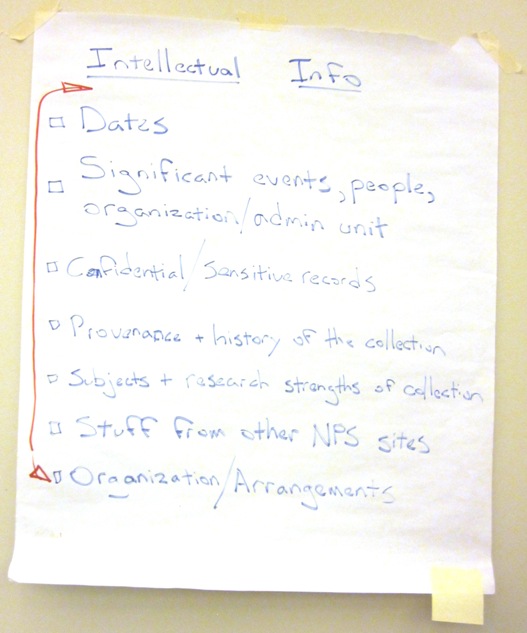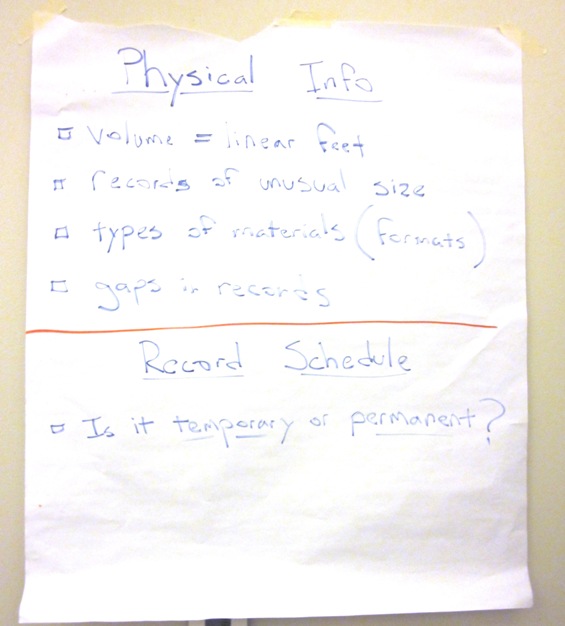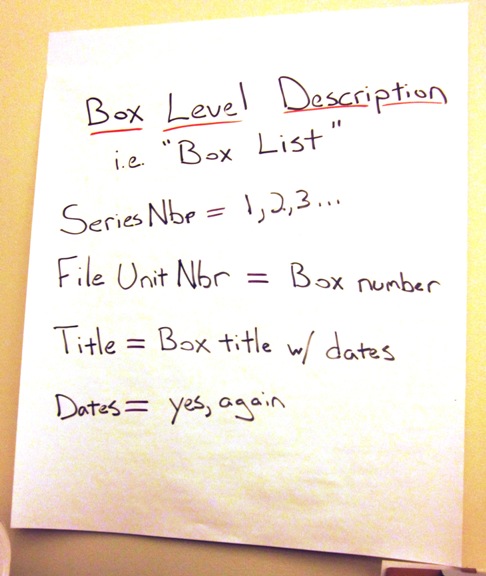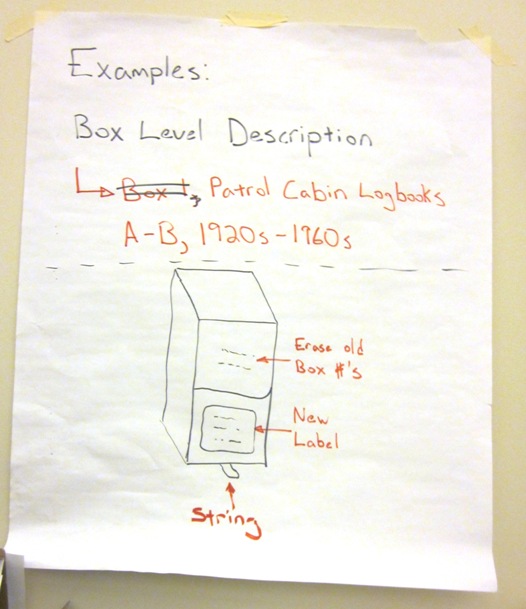One resource that we used consistently was our records retention schedule. For seasoned processors, we sent links out ahead of time and for volunteers with no experience, we introduced the schedule in our first on-site orientation session. The schedule was helpful not only in determining if the records being examined were permanent or temporary, but also in trying to determine what exactly a particular record might be and what its original function was. Sometimes, we had to take the answers with a grain of salt because it has become clear as we process our records that not everyone applying the file codes actually understood the schedule and applied it correctly, but the schedule was definitely one more tool in our appraisal and arrangement toolbox. The National Park Service records schedule has changed over time so we kept physical copies from as many years as we could find on hand during processing—and in one case we contacted other parks to track down a schedule from the 1960s that included a short lived file code that we couldn’t find anywhere else (thanks Yosemite for providing the answer!). The NPS has a new records schedule, which we used to establish the record groups and to figure out which record series belonged to that record group. The previous schedule, however, was most heavily used and helped us primarily in identifying records and their functions. An older schedule was used for the same purpose for records created and coded before 1953. Several editions to these two schedules were used when there were short lived codes that had to be tracked down (we’re in the process of scanning these and will post them at a later date).
Another resource that we used frequently, especially with those volunteers who were new to archives as well as with allied professionals who have their own professional lingo, sometimes with differing meanings, was the Society of American Archivists’ glossary. A previous blog post examined this resource in more detail, but to sum it up, we used the glossary to introduce the key concepts in archival theory and practice and to make sure we were all on the same page when we were working as a team.
We also relied heavily on the article by Mark Greene and Dennis Meissner, “More Product, Less Process: Revamping Traditional Archival Processing,” The American Archivist, 68 (Fall/Winter 2005), 208-263. Again, we sent out a link ahead of time for graduate students and archival professionals (who had probably already read it, but we suggested they refresh their memories). For newbies, we talked about it in the training sessions, mostly focusing on the concept of not getting bogged down reading or preserving individual items.
What we did send out ahead of time to the newcomers to archives were some basics of archives readings, so that they could begin to understand some of the key archival concepts such as archival appraisal, records series, and finding aid. The Archives Association of British Columbia’s Archivist’s Toolkit is written specifically for an non-archivist audience and is time-tested; it’s second edition is in the works and completed portions are available online. The Getty’s Introduction to Archival Organization and Description is a bit more technical, but small enough to be quickly read and also available online.
Finally, as the grant evolved we made posters of key concepts and commonly asked questions and posted them in the processing room for quick reference. It was difficult to photograph the white papered posters hung on a white wall, but hopefully, the images below give you a sense of the recurring questions.
